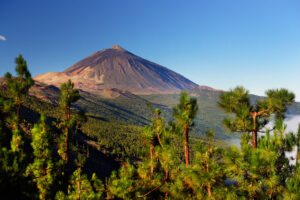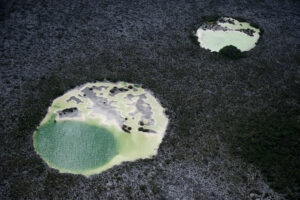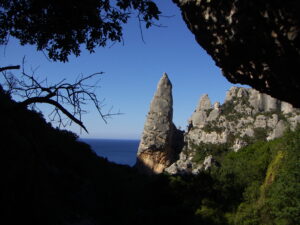Last week, my friend Dana finished law school. To celebrate, I proposed a two-day trip to the Monongahela National Forest in West Virginia, two hours from our home of Charlottesville and less than four hours from Washington, DC, where Dana spent a sizable chunk of her time as a lawyer-in-training.
Dana agreed, and the plan was made. The day after she finished finals, I would drive her around and show her the radio astronomy observatory, the old railway station, and the countryside. It would be a nice getaway between three years of law school and a summer of studying for the Nevada bar.
Right before we were set to leave, Dana told me she’d mentioned the trip to a friend. “They say there’s no cell reception at all out there.”
I could not believe I had neglected this detail. After all, the no cell service, no Wi-Fi shtick was the appeal of the thing. And in the modern United States, it’s a crucial piece of information for any travel plans. “I promise I’m not trying to lure you into the woods out of cell service to axe murder you,” I told her.
But Dana was thrilled. She sent off a flurry of emails to everyone who might want to contact her, and on Thursday, the two of us set off in my battered 2007 Toyota Corolla toward the offline, disconnected world of the National Radio Quiet Zone.
Here’s my guide to doing the same.
The road to the Quiet Zone
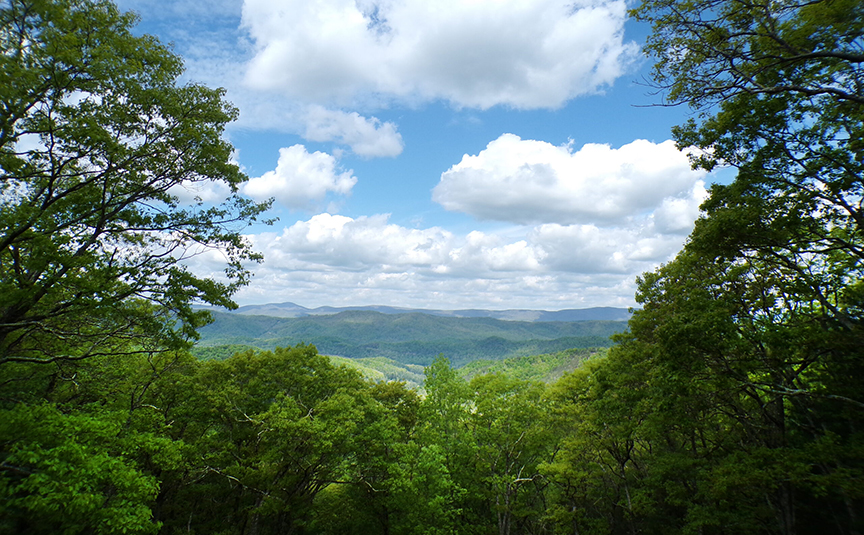
The George Washington National Forest sits along VA-250 on the way to the Quiet Zone. Photo: Reynier Squillace
Part of the appeal of any backcountry is that it’s off the grid. But for anyone who wants to check out some museums, see a little bit of history, and eat local cuisine, tourism in the United States comes with connectivity. The exception is the National Radio Quiet Zone, a massive square of land in the Appalachian Mountains blanketing over 30,000 square kilometers of rolling woodland. At the heart of the Quiet Zone sits the Monongahela National Forest of West Virginia.
Historically, the United States government has made a sport of neglecting key infrastructure in Appalachia. But the Quiet Zone, established in 1958, was not the child of that neglect. Rather, the trappings of contemporary life, even in the 1950s, were causing an uptick in Radio Frequency Interference, or RFI. That didn’t bode well for the nascent Green Bank Observatory, set to become a behemoth of American astronomy, or for the military radar experiments in nearby Sugar Grove, West Virginia.
Flash forward to the present day, and the Quiet Zone defends against a lot more than home radios and satellite TV. As you pass westward from the frantic world of Central and Northern Virginia, cell service flickers out.
A curious name
But this isn’t the backcountry. Historical monuments line the one-lane highway to Green Bank, including the bafflingly named Confederate Breast Works. Nestled at the top of a mountain, this scenic overlook and conversation starter features a pleasant one-mile loop hike, perfectly situated for stretching one’s legs on the way to the heartland of the Quiet Zone.
Of course, there’s no cell reception to Google any key definitions. Dana and I faithfully read every sign at the place, none of which specify exactly what Confederate Breast Works are, or why they needed to happen right here.
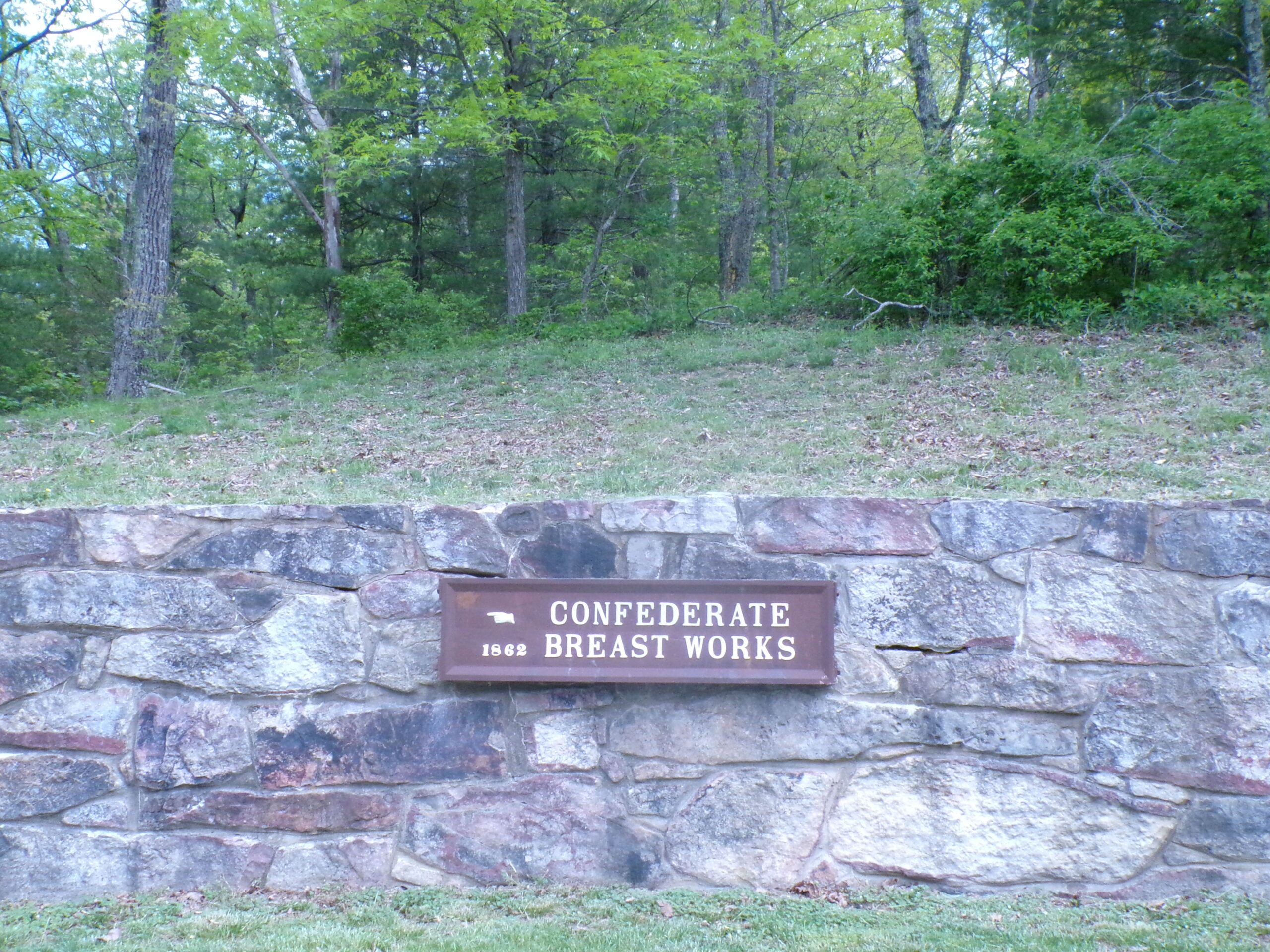
If you’re a military history buff who knows what breastworks are, don’t spoil the fun for the rest of your party. Photo: Reynier Squillace
After about an hour of driving without reception, VA-250 spits you out in the bustling city of Monterey, Virginia (pop. 172). This is the last time you will have reception on the road to the Monongahela National Forest.
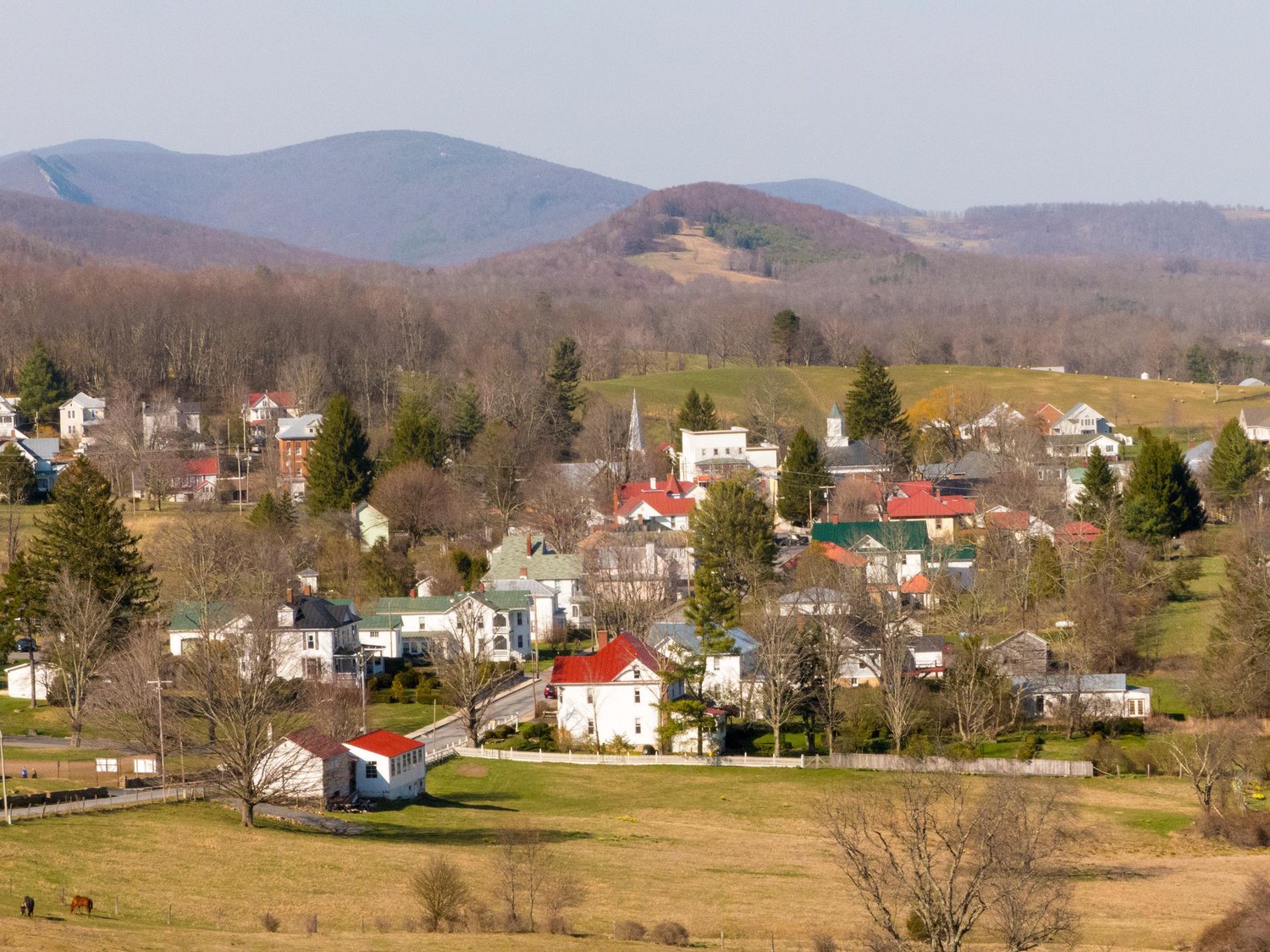
Monterey is the last place along the road to the Quiet Zone where you can answer an email. Photo: townofmonterey.com
Last chance Wi-Fi
While there are multiple places to eat in Monterey, I beg you to try the Curly Maple. Doubling as a brunch spot and a store for local goods, it boasts an impressive selection of maple syrup and cider (tested and approved by yours truly).
If you’re looking for something fresh, wander down the street to the Highland Roots Market. With produce sourced exclusively from local farmers, the shelves change with the seasons. If you catch them in the fall, the fresh apple cider is to die for.
But the shining gem of Monterey is an unobtrusive building labelled the Charles Pinckney Jones Museum. This beautifully restored, 19th-century townhouse is free to enter. It boasts two floors of old furniture, photographs, and fashion. While named for Charles Pinckney Jones, a Confederate soldier and later Rector of the University of Virginia, the museum focuses mostly on the material history of upper-class rural Virginia. We left knowing a lot more about early indoor plumbing than Jones or his family.
Dana and I spent a long time hovering over one wall in particular, where the restoration had uncovered pencil markings under the flaking wallpaper. Union soldiers boarded there during the war. Although their handwriting is a bit too nice to be modern, their signatures look like they could have been written yesterday.
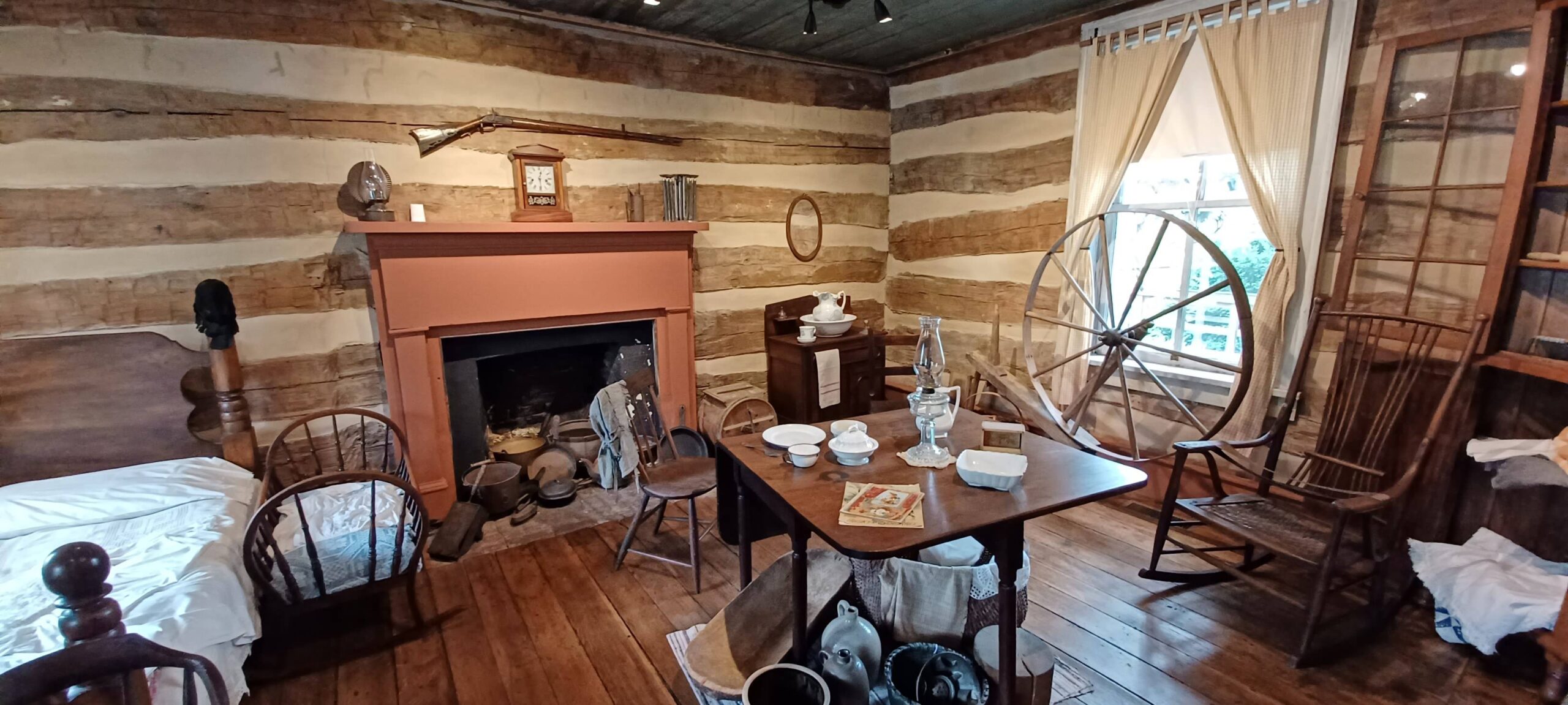
Most artifacts in the Charles Pinckney Jones Museum are originals kept in the house for over a century. Photo: Reynier Squillace
The joy of the Quiet Zone
As soon as you exit Monterey, you head up and away from the thick maple groves of Virginia and up into more rarefied air. Pine trees begin to appear among the maple and beech.
I was thankful to head out of the cell service zone once more. As soon as I had arrived in Monterey, my phone began buzzing with an hour and a half’s worth of missed messages. Someone needed me to urgently sign a form, and someone else wanted to know whether I had tested a new algorithm yet. The world, in short, was falling apart without me.

Pocahontas County, West Virginia, is higher and drier than the surrounding land. Photo: Reynier Squillace
I spent a frantic 15 minutes on the phone in Monterey, feeling wretched and guilty. The online world seemed to have its claws more firmly stuck in me than in Dana, whose job it was to be up-to-date, tapped in, connected. I had planned this trip for her, but after two intense years of work for my Master’s degree, perhaps I needed it just as much as she did.
So I asked someone else to handle the form, since I couldn’t do anything about it from Monterey, and turned off my phone.
The pine trees engulfed us. The rest of the world dropped away.
And there, ensconced in the heart of the National Radio Quiet Zone, waited Green Bank Observatory.
A trip to the telescopes
When I talk to astronomers from other countries, they’re always surprised at how open our telescopes are. Visiting most foreign sites requires background checks and waivers. At Green Bank Observatory, the site of the largest steerable telescope in the world, anyone can just wander up.
Schools around West Virginia send field trips to the Green Bank Science Center, a charming astronomy museum guarded by a large statue of a fish (the Bicentennial Trout). For the adults, outside stands the first ever purpose-built radio telescope, the Reber Dish.

Nineteen-year-old Grote Reber built this in his mother’s backyard. Photo: Reynier Squillace
Only film photography allowed
Only diesel vehicles are permitted within the zone around the crown jewel telescope, a 300-foot behemoth with a support structure like an industrial crane. Digital cameras are banned; you must use old-fashioned film cameras.
You can take a bus tour from the science center, but I recommend the walk. It’s a neat three-mile loop that takes you past a purgatory of radio telescopes. Most haven’t been operational in years, and one has a nuclear bunker under it.
Radio telescopes are undemanding of their audience. They tap into something in the hind brain, some human impulse that appreciates gothic cathedrals and pyramids. The brain says: That’s big. Wow. It doesn’t matter how many times I go to Green Bank, my first thought is always: Oh, I forgot how big these things are. Wow.

This image was taken from two miles away. The barn is at least a mile in front of the telescope, and it’s a very large barn. Big. Wow. Photo: Reynier Squillace
Where to eat and sleep in Pocahontas County
It’s good form to take Trader Joe’s orders before heading out to the food deserts of West Virginia, where Dollar General is often the only place to buy food. Dana and I bought one night’s lodging at a friend’s house with tofu, coconut milk, and onions. But for anyone checking out the Monongahela for the first time, there are a variety of campsites and Airbnbs. I recommend avoiding anything in Snowshoe — the upscale ski resort might as well be another planet from everything else in Pocahontas County. If you’re looking for something on the swankier side, the town of Marlinton features several local inns.
As for food, I had been hyping up Dean’s Den in Frost, about 20 minutes from Green Bank, for the last week. Dana was starting to get a bit sick of it. “Can I check the menu online?” she kept asking me. “No,” I said, since nothing in the Monongahela has an online menu. “You’ll like it.”
She liked it. Everyone likes Dean’s Den. It’s a shack by the side of the road, valiantly restored from the time a semitruck plowed into it last year, that serves West Virginia’s customary mix of country barbecue and Italian, plus a smattering of whatever else the chef feels like cooking that week. My last time in the Monongahela, I had a surprisingly good plate of General Tso’s Chicken. I’ve joked about Dean’s Den being the best restaurant in America, or at least I claim it’s a joke. My partner, meanwhile, has actually dreamed about their cheese fries.
Power outages
If the power is out, as it often is in the Monongahela, then Dean’s Den will be tragically closed. While it will be hard, I recommend you don’t commit yourself straightaway to suicide. In Marlinton, Mim’s Kitchen offers casual, fresh food (and very good cheesecake). If you’re in the mood for some live music with your dinner, especially roots and bluegrass, check out Old Mountain Tavern.
Oh, and be sure to stop by Mountain State Cakes Bakery in Dunmore for freshly made pepperoni rolls, a West Virginia classic. No, they’re not pizza rolls. Watch it.
The steamy history of Cass
By the next morning, I had been out of cell service and Wi Fi for maybe 18 hours. Everything felt slower. Without the ability to check our phones, Dana and I had both started new books and sunk deeper into conversation than usual. I had wished my partner goodnight on the landline like it was 1985 (apologies to anyone to whom 1985 doesn’t feel that long ago).
We bade goodbye to my friend and their cats and headed out the door for a hike behind the observatory.
Then we set off to Cass for lunch. There’s something deeply eerie about Cass, and it’s not the hulking specter of a derelict mill by the river. You don’t spend long in West Virginia without becoming desensitized to the signs of a region that the country has failed. Rather, the unsettling thing about Cass is exactly what it prides itself on: rows and rows of white pillbox houses from its days as a logging company town.
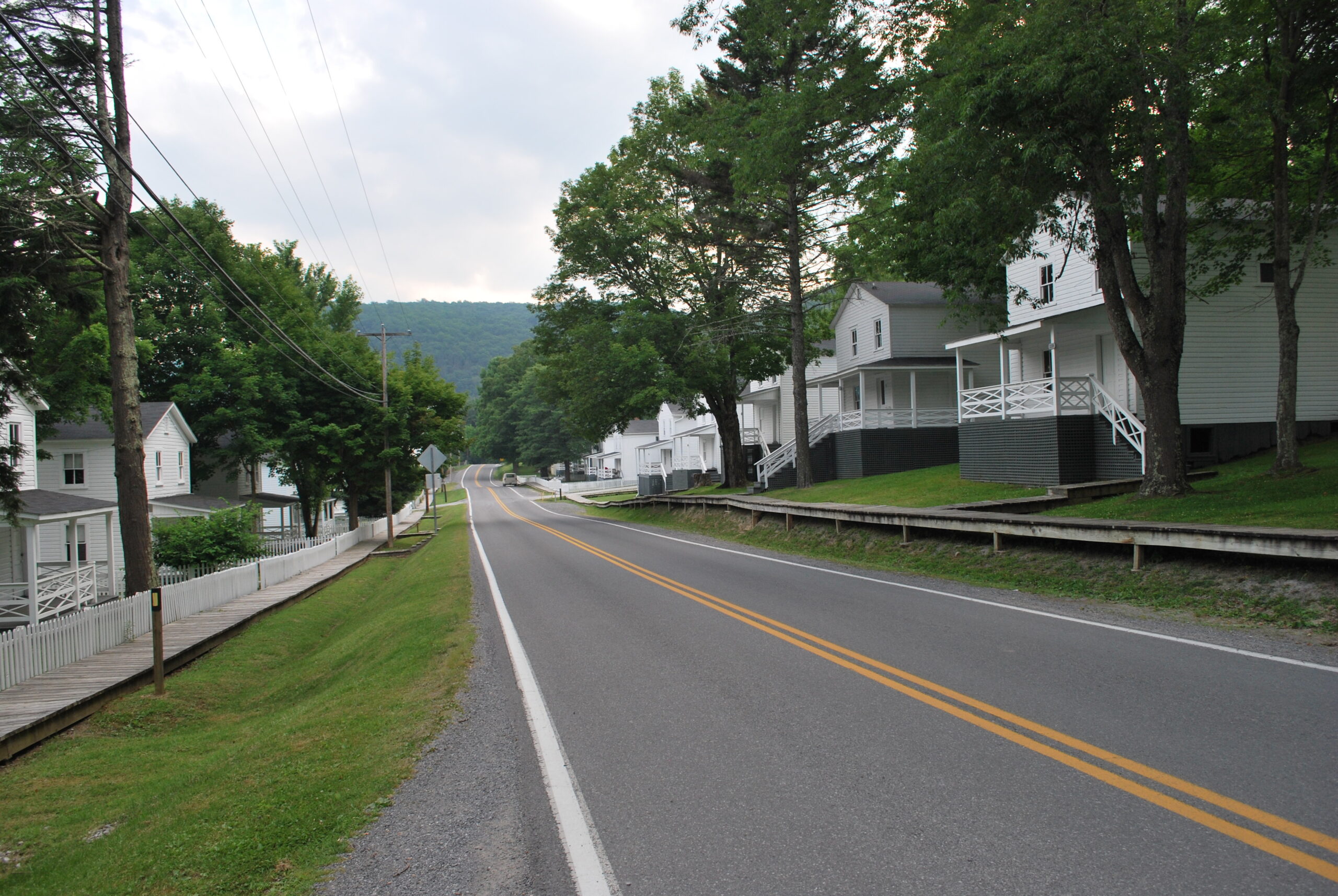
The Cass company houses are nicer than my house, but significantly creepier. Photo Brian M Powell
The houses remain cheerfully inhabited and beautifully maintained. A tiny City Hall building lurks over a black iron door labelled JAIL that looks as though it should be restraining a train robber.
And speaking of trains, there’s the station. The Cass Scenic Railroad State Park offers hours-long tours through the surrounding landscape. You can even take it up to the ghost logging town of Spruce. Your vehicle: a genuine, century-old steam train running on the old Chesapeake & Ohio line.
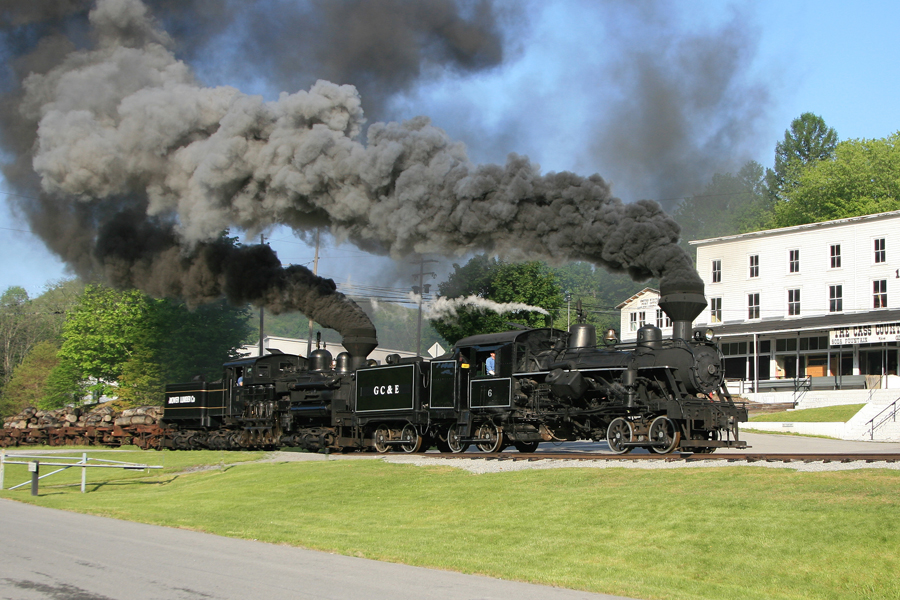
The Cass Scenic Railroad runs on summer weekends. Photo: Shayfan/ Wikimedia Commons
Inside the old company store, you can grab a bite to eat at Shay’s Restaurant and poke your head into the railroad and logging museum. Alongside copious local foods and keepsakes, there’s also a recreation of the old Cass pharmacy, operational during its logging years.

If there’s one thing I’ve noticed about small-town museums, it’s that they love a good recreation. This pharmacy tableau occupies the equivalent of a whole room at the Cass Company Store. Photo: Reynier Squillace
Back into the world
I resurfaced in Monterey 24 hours after I had left it, feeling refreshed. I had missed 80 messages, most of them about some guy called Robert Prevost, and a host of emails. It had only been a day. How was it moral for anyone to receive that many emails in a day?
Living within a nice weekend trip’s distance of the Quiet Zone is a privilege. But being able to exit it is more so. When I brought my mother out for her birthday last year, a violent storm swept across the Monongahela. One of my mother’s three pedigree Australian Shepherds decided that it was the night that her body was going to shut down. With a pet’s unerring eye for inconvenience, she crawled under the bed, whimpering, and wouldn’t stop, no matter what my mother tried.
There were no emergency vets in Pocahontas County. There were no emergency vets in nearby Highland County, where Monterey is, or in the county beyond that. In fact, the nearest emergency vet was in Staunton, a full two hours away in the best of weather.
Not to be deterred, my mother woke me at 2 in the morning to let me know she was setting off with her shivery dog into the storm. Once she left, I had no way to contact her.
A fallen tree
She came back three hours later, having made it just past Monterey, where a tree had fallen across the one-lane highway connecting the Quiet Zone with the rest of the world. In the dead of night, with a sick dog and no way of calling for help, she stared at it and wondered if she could move it herself. But she was utterly alone, and there was nothing she could do. She turned around.
As it happened, her dog had — has — a nasty form of cancer. As soon as we returned to Charlottesville, she got surgery. They took a lump out of her intestine the size of a fist. (Miraculously, she’s still happily chugging along a year later.)
Nothing like that happened on my trip with Dana. But with the lack of veterinary and medical services, fresh food, and infrastructure, it’s not hard for people outside the Quiet Zone to question why anyone lives there.
Head out for a weekend, if you’re in the DC area. You’ll see.




